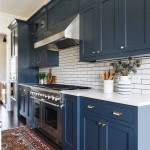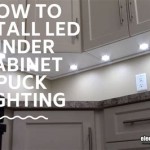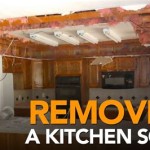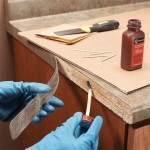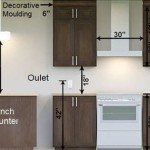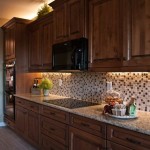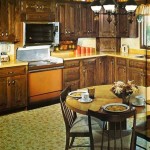Kitchen Cabinet Faces: A Comprehensive Guide
Kitchen cabinet faces, often referred to as cabinet doors and drawer fronts, are the visible elements of cabinetry that significantly influence the overall aesthetic appeal and functionality of a kitchen. Replacing or refacing these components can transform the look of a kitchen without the extensive costs and disruption associated with a full cabinet replacement. This article provides a detailed explanation of kitchen cabinet faces, encompassing various materials, styles, considerations for selection, and maintenance practices.
Understanding the Different Materials for Kitchen Cabinet Faces
The choice of material for kitchen cabinet faces is a critical decision, as it directly impacts the durability, appearance, and cost of the cabinetry. Several materials are commonly used in the manufacture of kitchen cabinet faces, each with its own set of advantages and disadvantages.
Solid Wood: Solid wood is a classic and highly desirable material for kitchen cabinet faces due to its natural beauty and durability. Common wood species used include maple, oak, cherry, and walnut. Maple is known for its smooth, even grain and ability to accept paint well, making it a versatile choice. Oak is a strong and durable wood with a distinctive grain pattern, often used in traditional kitchen designs. Cherry is prized for its rich, reddish-brown color and fine grain, adding a touch of elegance to cabinetry. Walnut is a premium hardwood known for its dark color and luxurious appearance. Solid wood cabinet faces can be stained or painted to achieve a wide range of finishes. However, solid wood is susceptible to changes in humidity, which can cause warping or cracking over time. Proper sealing and climate control are essential to maintain the integrity of solid wood cabinet faces.
Wood Veneer: Wood veneer consists of thin sheets of real wood adhered to a substrate, typically particleboard or medium-density fiberboard (MDF). This construction offers the aesthetic appeal of solid wood at a lower cost. Veneer cabinet faces can be stained or finished to mimic the look of various wood species. Wood veneer is less prone to warping than solid wood due to the stability of the substrate. However, veneer is more susceptible to damage, such as chipping or peeling, and cannot be easily repaired.
Laminate: Laminate is a synthetic material made by bonding layers of paper and resin to a substrate, often particleboard. Laminate cabinet faces are available in a wide range of colors, patterns, and textures, including wood-grain simulations. Laminate is a cost-effective option that is resistant to scratches, stains, and moisture. It is also easy to clean and maintain. However, laminate cannot be easily repaired if damaged, and the edges can be prone to chipping. Thermofoil is a type of laminate that is heat-sealed to the substrate, creating a seamless, smooth finish.
Medium-Density Fiberboard (MDF): MDF is an engineered wood product made from wood fibers, resin, and wax. It is a dimensionally stable material that is resistant to warping and cracking. MDF cabinet faces are often used for painted finishes, as the smooth surface provides an ideal base. MDF is also a cost-effective alternative to solid wood. However, MDF is more susceptible to moisture damage than solid wood and is heavier than other materials.
Metal: Stainless steel and aluminum are commonly used for kitchen cabinet faces in modern and contemporary designs. Metal cabinet faces are durable, hygienic, and easy to clean. They are also resistant to heat and moisture. However, metal cabinet faces can be expensive and may show fingerprints and smudges. They can also create a cold, industrial look that may not be suitable for all kitchen styles.
Exploring Different Styles of Kitchen Cabinet Faces
The style of kitchen cabinet faces plays a significant role in defining the overall look and feel of the kitchen. Various styles are available, ranging from traditional to contemporary, each with its unique characteristics.
Shaker: Shaker-style cabinet faces are characterized by a five-piece construction, featuring a flat center panel surrounded by a simple frame. This classic design is versatile and can be adapted to various kitchen styles, from traditional to transitional. Shaker cabinets are known for their clean lines and understated elegance.
Raised Panel: Raised panel cabinet faces feature a center panel that is raised above the surrounding frame, creating a more ornate and traditional look. This style is often found in formal kitchens and is available in various designs, including arched, cathedral, and square panels.
Flat Panel: Flat panel cabinet faces, also known as slab cabinet faces, have a simple, minimalist design with a flat, unadorned surface. This style is popular in modern and contemporary kitchens, where clean lines and simplicity are valued.
Glass Front: Glass front cabinet faces feature glass panels in place of solid panels, allowing you to display dishware, glassware, or decorative items. Glass front cabinets can add visual interest and a sense of openness to a kitchen. Various types of glass can be used, including clear glass, frosted glass, and textured glass.
Louvered: Louvered cabinet faces feature horizontal slats that allow for ventilation. This style is often used in pantries or other areas where air circulation is desired. Louvered cabinets can add a touch of casual elegance to a kitchen.
Beaded Inset: Beaded inset cabinet faces feature a decorative bead along the inner edge of the frame, adding a touch of detail and sophistication. This style is often found in traditional and farmhouse kitchens.
Key Considerations When Selecting Kitchen Cabinet Faces
Selecting the right kitchen cabinet faces involves careful consideration of several factors, including budget, style, durability, and maintenance requirements. Considering these factors will ensure a satisfactory outcome and a kitchen that meets the specific needs and preferences of the homeowner.
Budget: The budget is a primary consideration when selecting kitchen cabinet faces. Solid wood cabinet faces are typically the most expensive option, while laminate and MDF cabinet faces are more affordable. Wood veneer offers a compromise between cost and quality. It is essential to establish a budget before beginning the selection process and to stick to it as closely as possible.
Style: The style of kitchen cabinet faces should complement the overall design of the kitchen and the home. Consider the architectural style of the home, the color scheme, and the desired aesthetic when selecting cabinet faces. It is also important to consider the long-term appeal of the chosen style, as kitchen renovations are often a significant investment.
Durability: Kitchen cabinet faces should be durable enough to withstand daily use and resist scratches, stains, and moisture. Solid wood and metal cabinet faces are generally the most durable options, while laminate and MDF cabinet faces may require more careful handling. Consider the lifestyle of the household and the level of use the cabinets will receive when selecting cabinet faces.
Maintenance: The maintenance requirements of kitchen cabinet faces should also be considered. Some materials, such as laminate and metal, are relatively easy to clean and maintain, while others, such as solid wood, may require more frequent cleaning and polishing. Choose cabinet faces that are easy to keep clean and that fit the homeowner's maintenance preferences.
Size and Configuration: Ensure that the new cabinet faces are the correct size and configuration for the existing cabinet boxes. Measure the height, width, and thickness of the existing cabinet faces accurately to ensure a proper fit. Consider the placement of hinges and hardware when selecting new cabinet faces.
Finish: The finish of the kitchen cabinet faces can significantly impact the overall look and feel of the kitchen. Consider the desired color, sheen, and texture when selecting a finish. Popular finishes include painted, stained, and glazed finishes. It is also important to consider the durability of the finish and its resistance to scratches and stains.
Installation: The installation of kitchen cabinet faces can be a DIY project or can be contracted to a professional installer. Consider the homeowner's skill level and experience when deciding whether to install the cabinet faces themselves or hire a professional. Professional installation can ensure a proper fit and finish, while DIY installation can save money.
Hardware: The hardware, such as knobs and pulls, can significantly impact the look of the kitchen cabinet faces. Select hardware that complements the style of the cabinets and the overall design of the kitchen. Consider the size, shape, and finish of the hardware when making a selection.
In conclusion, selecting the right kitchen cabinet faces involves careful consideration of various factors, including material, style, budget, durability, and maintenance. By carefully considering these factors, homeowners can create a kitchen that is both beautiful and functional.

Best Kitchen Cabinet Refacing For Your Home The Depot

Fast Cabinet Doors Custom Replacement For Kitchen Cabinets Cupboards

Popular Cabinet Door Styles For Kitchens Of All Kinds

Types Of Cabinet Doors 10 Popular Door Styles Cabinetdoors Com

Diffe Types Of Kitchen Cabinet Doors For Your Home

Custom Wood Kitchen Cabinet Doors Magic

How Can I Change The Look Of My Kitchen Cabinet Doors Now

Popular Cabinet Door Styles Trends In 2024 Model Remodel
The 411 On Kitchen Cabinet Door Designs Sweeten Blog

Our Renovation Kitchen Cabinet Door Styles That Will Never Go Out Of Style
Related Posts

